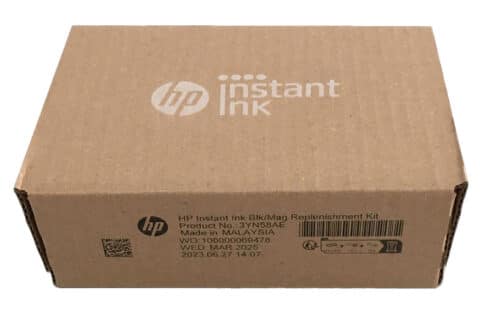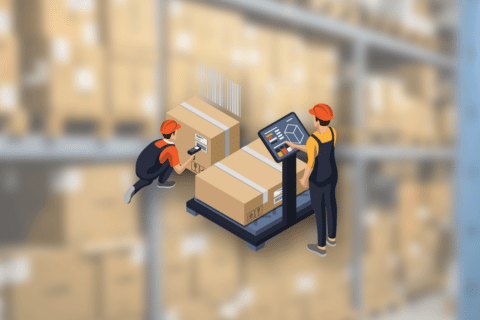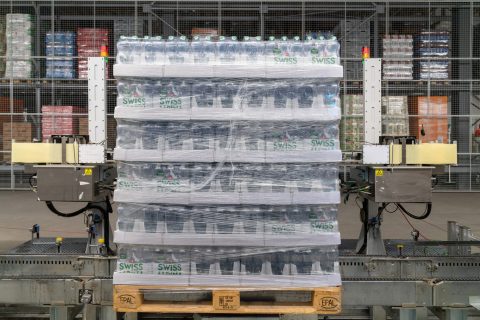The GS1 logistics label has become a fixture in logistics processes between suppliers and the industry. The standardised label (also known as the SSCC label) contains the key information about the pallet.
GS1 logistics label for pallet labeling

“SSCC” stands for “Serial Shipping Container Code”. Every pallet gets an SSCC. Thanks to the worldwide use of the GS1 standard, this unique code allows the sender to transmit all important information to the recipient via EDI (Electronic Data Interchange). With this information, the recipient can already start data processing before getting the actual pallet.
When the pallet arrives, all that is left to do is to scan the reference number. Data entry takes split seconds! When the forklift picks up the pallet, the next step is already triggered, for instance cross-docking via direct transfer to the next ramp.
Structure and advantages of the GS1 logistics label

Barcodes can carry other information besides the SSCC, for example:
- Article numbers
- Best-by dates
- Batch numbers
The preceding application identifier marks the type of information that follows. The application identifier “01” introduces article numbers, called GTIN (Global Trade Item Number) in the GS1 system. They are commonly still known as EAN codes.
The application identifier “11” marks the best-by date, and “10” marks the batch number.
This intricate structure enables several pieces of information to be encoded in a single barcode, cramming a lot of information onto a small label. It also makes scanning and processing the barcode much easier.
The first encounter with GS1 logistics labels and their expansive documentation can be confusing for manufacturers. Where do you start?
The GS1 logistics label quick guide
That is why GS1 Germany has written a brief introduction to GS1 labeling.
It contains the key information on a mere 8 pages. You will learn about the label design as well as how and where to apply the label to pallets.
It’s a great entry point to GS1 labeling. On a side note, if you have an increasing number of pallets that need this kind of labeling, you might want to think about automating label printing and application. Go to our website to find out more about a suitable pallet labeling system.
We are happy to help with any questions! Feel free to contact our free hotline .
Image source and Quick Guide download: GS1 Germany


















